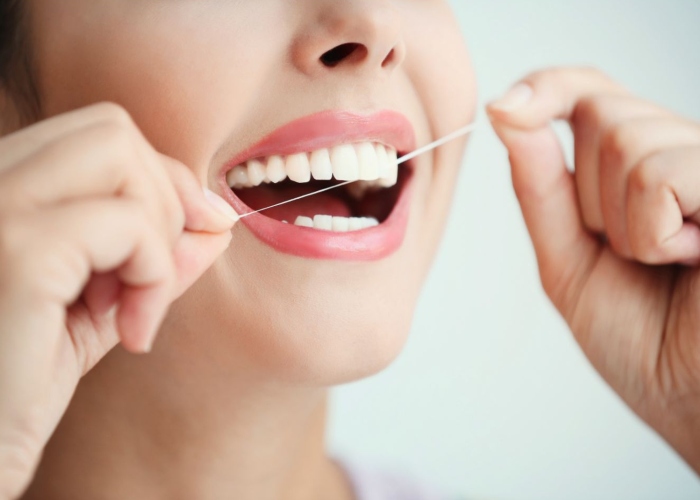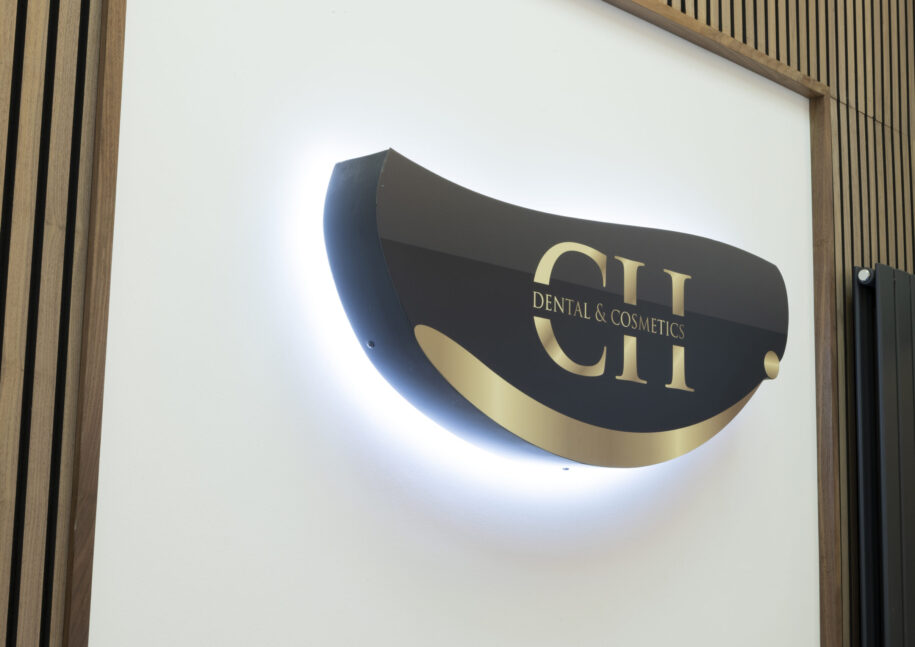How to Properly Floss Teeth Without Hurting Your Gums
- Home
- /
- Blog
- /
- Dental Advice
- /
- How to Properly Floss Teeth Without Hurting Your Gums
17 October 2024
How to Properly Floss Teeth Without Hurting Your Gums

Despite the Oral Health Foundation stating that we should be cleaning between our teeth at least once a day, many of us are either guilty of skipping this step or doing it incorrectly.
So why is this?
It could be that you’ve tried flossing only to find it left your gums bleeding and feeling sore or you’ve been in a rush and didn’t have the time. Whatever the reason, it’s never too late to start flossing. In this post, we’ll explain how to properly floss teeth avoiding painful gums and ensuring you maintain a healthy smile.
The Importance Of Flossing
Before we delve into the correct technique, let’s touch briefly on why flossing is so important. Flossing, also referred to as interdental cleaning, simply means cleaning between your teeth. While brushing twice daily and using mouthwash is a great start to a good oral care routine, failing to floss can put your oral health at risk. Flossing cleans the area between the teeth that your toothbrush can’t reach. Its purpose is to prevent plaque from forming and hardening into calculus.
Dental plaque, a sticky film that can cause gum disease, can accumulate if the spaces between your teeth and along the gumline aren’t thoroughly cleaned. Floss reaches these small gaps and hard-to-reach areas, removing trapped food and debris.
Flossing each day helps to:
Avoid bad breath caused by trapped food particles
Remove plaque from between the teeth
Prevent gum disease (gingivitis and periodontitis)
Lower the risk of cavities forming between the teeth
Unfortunately, many people find flossing a challenge. When it’s not done properly it can damage the gums leaving them red, sore or bleeding. The good news is that with the right technique, flossing is pain-free and effective.
Why do your gums hurt after flossing?
If your gums feel sore after flossing it is likely that you’re making one or more of these common mistakes:
Overly forceful: Some people can be too aggressive when flossing. Pushing the floss hard into your gums can cause bleeding and irritation.
Flossing too deeply: You only need to floss slightly beneath the gumline to remove plaque. Going in too deep with the floss can harm sensitive tissue.
Snapping the floss: Some people snap the floss between their teeth which can cause small tears that irritate the gums.
Flossing too quickly: Rushing this step means you may not be removing all the debris, which in turn can irritate the gums.
How to properly floss teeth without discomfort
Now we’ve discussed the mistakes to avoid, let’s dive into the correct way to floss. Follow these steps for pain-free and effective flossing.
Choose the right dental floss
There are so many types of flossing products that finding what works best for you is often a case of trial and error. If for example, there’s little space between your teeth, you may find waxed floss is easier to use in those tight spaces whereas if you have larger gaps between your teeth dental tape may work better for you. There’s no reason why you can’t have a variety of products close at hand to suit all members of your family. Here’s a useful guide on choosing the right floss for you. Whatever product you choose, it’s important to use it daily.
Use sufficient floss
We recommend taking a length of floss that’s around 45 cm (18 inches). This is enough for you to wrap the floss comfortably around your middle fingers and use a fresh section for each tooth. By doing so you lower the risk of irritation by spreading bacteria between the teeth.
Hold the floss correctly
Wrap the floss around your middle fingers, leaving about 1-2 inches of floss to work with. Guide the floss gently between your teeth using your thumbs and index fingers. Keep a controlled grip without straining the floss.
Be gentle
Use a gentle sawing motion to carefully slide the floss between your teeth. Avoid snapping the floss into the gums as this will hurt. Once in place, form the floss into a C-shape that you can curve around each tooth, cleaning the sides without damaging your gums.
Floss below the gumline
It’s vital to floss slightly beneath the gumline to remove debris and plaque but avoid forcing the floss deeply into the gum. Glide the floss gently under the gumline using that C-shape to clean the tooth safely and thoroughly.
Move to a clean section for each tooth
As you move from one tooth to the next, use your fingers to select a fresh, clean section for each tooth so that you’re not spreading bacteria.
Take your time
Rushing can cause you to miss areas or floss too hard, leading to irritation and discomfort. Try to allow 2-3 minutes for your flossing routine. This will give you sufficient time to clean every tooth thoroughly without causing damage.
What to do if your gums are bleeding
First of all, don’t panic. Bleeding gums are often the first sign of early-stage gum disease and point to a build-up of plaque which is irritating the gums. Continue to floss consistently and gently and you’ll find that with the right technique inflammation and bleeding will subside within a week or two. If your gums continue to bleed or feel sore after a few weeks of flossing, it’s best to visit your dentist as you could have more serious gum issues that need addressing.
Alternative methods of flossing
If you’re still finding it difficult or uncomfortable to floss the traditional way, there are alternatives to consider.
Interdental brushes – These tiny, cylindrical brushes fit between the teeth and are easier to use for some people than floss.
Water flossers – These use a steady stream of water to flush away food particles and debris and are ideal for those with sensitive gums or who wear braces.
Floss pick – This is a small plastic tool that holds the floss making it easier to reach awkward places like the back molars.
Take the next step to a healthier smile
Learning how to properly floss teeth without harming your gums is key to better oral health and a brighter smile.
If you’re still finding it difficult to floss or you’re experiencing discomfort, get in touch with the experienced team at Cheadle Hulme Dental & Cosmetics. We can assess your gum health, introduce you to our hygienist, and help you achieve and maintain tip-top oral health. Call us on 0161 486 0743 or use our online booking system to schedule a free consultation.
Get in touch
Categories
- Adult Braces
- Children's Dental Health
- Clear Aligners
- Composite
- Composite Veneers
- Cosmetic Dentistry
- Cosmetic Procedures
- Dental Advice
- Dental Anxiety
- Dental Bridges
- Dental Health
- Dental Hygiene
- Dental Implants
- Dental Insurance
- Dentures
- Research
- Gentle Dentistry
- Implants
- Invisalign
- News
- Oral Health
- Oral Hygiene
- Orthodontic Treatments
- Pain Free Dentistry
- Phobia
- Practice News
- Smile Makeovers
- Stain Removal
- Technology
- Teeth Straightening
- Teeth Whitening
- Treatment Offers
- Treatment Packages
- Veeners
- Your Dentist
Treatments
Taking your smile in a positive direction
When it comes to a friendly, caring, and professional dentist in Cheadle Hulme, you won’t find better than Cheadle Hulme Dental and Cosmetics. Why not book an appointment by contacting us directly at 0161 486 0743? We look forward to welcoming you.








